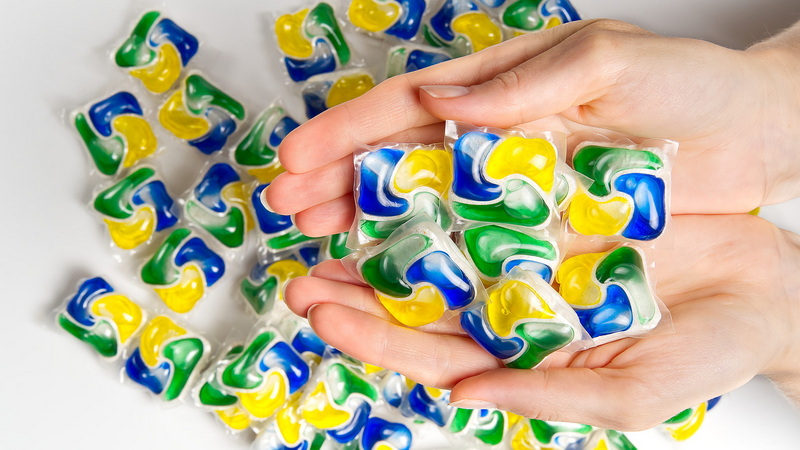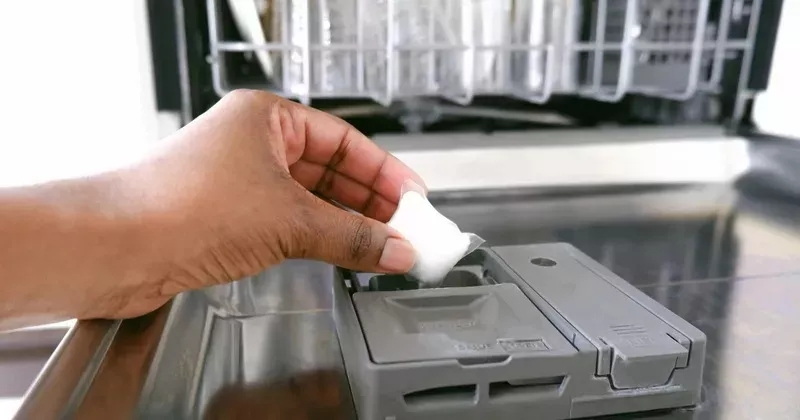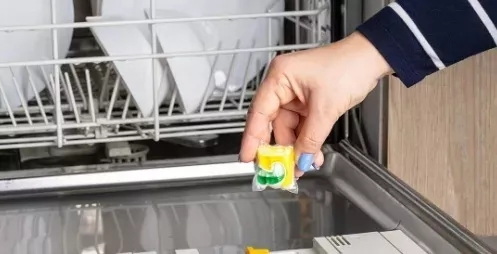Dongguan UFine Daily Chemical Co.,Ltd.
- All
- Product Name
- Product Keyword
- Product Model
- Product Summary
- Product Description
- Multi Field Search
Views: 222 Author: Tomorrow Publish Time: 10-24-2025 Origin: Site











Content Menu
● Understanding Dishwasher Pod Composition
● Common Reasons Dishwasher Pods Do Not Dissolve
>> 1. Water Temperature Too Low
>> 2. Improper Dishwasher Loading
>> 3. Hard Water and Mineral Buildup
>> 5. Using Expired or Damaged Pods
>> 6. Detergent Dispenser Issues
>> 7. Water Pressure Deficiency
● How to Ensure Dishwasher Pods Dissolve Properly
>> 2. Do Not Overload the Dishwasher
>> 3. Maintain Your Dishwasher
>> 4. Check for Proper Dispenser Function
>> 7. Select Appropriate Cycle
● FAQ
>> 1. Why does my dishwasher pod leave a white film on dishes?
>> 2. Can low water pressure cause dishwasher pods not to dissolve?
>> 3. How do I know if the detergent dispenser is working?
>> 4. Are all dishwasher pods compatible with every dishwasher?
>> 5. Is it better to use powder, liquid, or pods in dishwashers?
Dishwasher pods are a convenient and popular choice for cleaning dishes, combining detergent, rinse aid, and sometimes other components into a single, easy-to-use packet. Despite their convenience, many users experience issues with pods not fully dissolving during the wash cycle. This can lead to residue on dishes, reduced cleaning effectiveness, and frustration. In this article, we will explore why dishwasher pods sometimes fail to dissolve, factors influencing this problem, and how users can prevent it.

Dishwasher pods typically consist of a water-soluble film or pouch containing concentrated detergent in powder or gel form. The outer film is designed to dissolve in water at certain temperatures and timeframes, releasing the detergent inside. The detergent itself is formulated to break down grease, remove food residues, and leave dishes spotless.
The key components of dishwasher pods include:
- Water-soluble film: Usually made from polyvinyl alcohol (PVA), which dissolves in warm water.
- Detergent agents: Enzymes, surfactants, and bleaching agents.
- Rinse aids: Help prevent spots and promote drying.
If the film or the detergent inside does not fully dissolve, the pod remains partially intact, affecting cleaning performance.
Dishwasher pods are engineered to dissolve at specific temperatures, generally starting around 120°F (49°C). If the water entering the dishwasher is too cold, the water-soluble film may not dissolve completely, leaving residue. It is important that the hot water supply is adequate, especially at the start of the cycle, to ensure full dissolution.
Blocked detergent dispenser or poor water flow can cause insufficient contact between the pod and water. Overloading or placing dishes directly in front of the detergent compartment may prevent water from reaching the pod adequately. Proper loading allows water jets to reach all parts of the dishwasher and ensures that the pod is exposed to enough water turbulence.
Hard water contains high concentrations of minerals like calcium and magnesium, which can cause buildup inside the dishwasher or on dishes. This mineral buildup may interfere with the dissolution of pods and reduce detergent efficacy. Over time, mineral deposits can accumulate on the spray arms and other internal parts, reducing water flow and temperature distribution.
A malfunctioning dishwasher may not reach the proper water temperature or may have issues with water circulation, both essential for dissolving pods fully. Heating element failure, clogged spray arms, or problems with the pump and motor can lead to insufficient cleaning power and pod dissolution.
Older pods or those exposed to moisture before use may degrade and lose their solubility. A damaged or sticky film may not dissolve as intended. Storage conditions such as humidity and temperature extremes can affect pod integrity. Additionally, some cheaper pods may use films that are less reliable in dissolving consistently.
If the detergent dispenser door does not open during the cycle, the pod will not be released, remaining intact. Mechanical problems with the dispenser door or incorrect loading can cause this. In some dishwashers, the detergent dispenser is spring-loaded or electronically controlled, and malfunctions here are a common cause of undissolved pods.
Low water pressure in the dishwasher can reduce the efficiency of water flow, preventing pods from dissolving properly. Adequate pressure is necessary to agitate the water and break down the pod's film. Issues with household water pressure can also contribute.
Short wash cycles or eco-friendly cycles that use less water and lower temperatures may not provide enough time or conditions for pods to dissolve fully. Choosing the appropriate cycle for the type and soil level of dishes is important for proper pod dissolution.

Ensure your dishwasher is connected to hot water and that the water heater is set to at least 120°F (49°C). Pre-run hot water at the sink before starting the dishwasher to avoid cold water startup. This helps raise the temperature in the dishwasher quickly for effective film dissolution.
Load dishes carefully to allow water to circulate freely and ensure the detergent compartment is not blocked. Avoid placing large items near the detergent cup, which could prevent release or water flow.
Regularly clean your dishwasher, including spray arms and filters, to prevent buildup. Use dishwasher cleaners to remove mineral deposits and buildup that could interrupt water flow and heating. Descale if you experience hard water issues.
Make sure the detergent dispenser door opens during the cycle and that it is not obstructed. Test this by starting a short cycle and pausing to inspect the dispenser. Clean the dispenser regularly to prevent sticking.
Keep dishwasher pods in a cool, dry place to avoid premature exposure to moisture. Use airtight containers or keep pods in their original packaging sealed tightly.
Choose dishwasher pods from reputable brands that utilize effective and fully dissolvable films. Reading reviews and testing different brands can help identify the best option for your dishwasher model.
Use standard or heavy wash cycles when cleaning heavily soiled dishes. Eco-settings might save energy but may not provide optimal conditions for pods to dissolve.
If your water pressure is consistently low, consult a plumber or check your home's water system. Improving pressure will improve dishwashing performance generally.
- Run your dishwasher on a heavier cycle to allow more time and higher temperatures for pod dissolution.
- If hard water is an issue, consider using a water softening system or adding dishwasher salt (if your machine supports it).
- Avoid mixing pods with liquid detergent, which can cause residue.
- Regularly inspect the dishwasher for any parts blocking water flow, like jets or spray arms.
- Experiment with pod placement inside the detergent compartment to ensure they are correctly positioned.
Dishwasher pods not dissolving is a common issue caused by multiple factors including low water temperature, improper loading, dishwasher malfunctions, hard water, improper storage, and cycle choice. Users can prevent these problems by ensuring their dishwasher uses hot water, is loaded correctly, maintained regularly, and is paired with high-quality, properly stored pods. Taking these steps will lead to better pod dissolution, improved cleaning results, and a more pleasant dishwashing experience.

This is often due to pods not dissolving fully because of low water temperature, hard water mineral deposits, or detergent residue. Ensuring proper water temperature and maintenance can help.
Yes, insufficient water pressure can reduce the effectiveness of water jets, preventing pods from dissolving completely.
Listen for a click during the wash cycle or check if the detergent compartment door is open after the cycle finishes; visual inspection can also help.
Most pods are designed for standard dishwashers, but some features or detergent films may perform better with specific models or cycles. Refer to your dishwasher manual and pod packaging.
Each has pros and cons: pods offer convenience and pre-measured dosing, powders allow adjustable amounts, and liquids dissolve quickly. Choice depends on user preference and dishwasher performance.